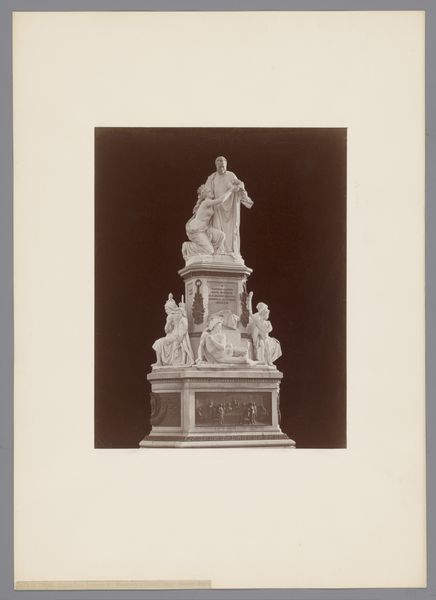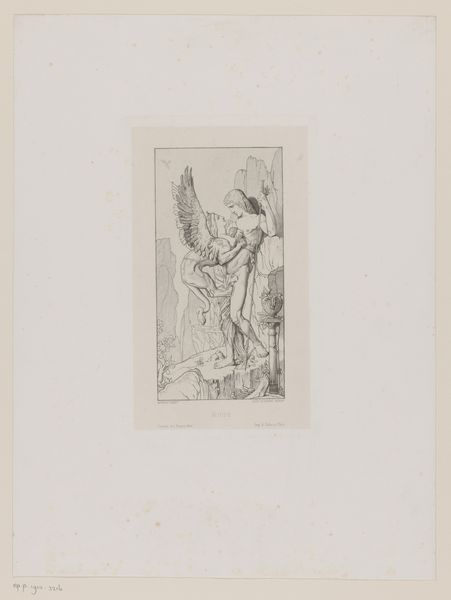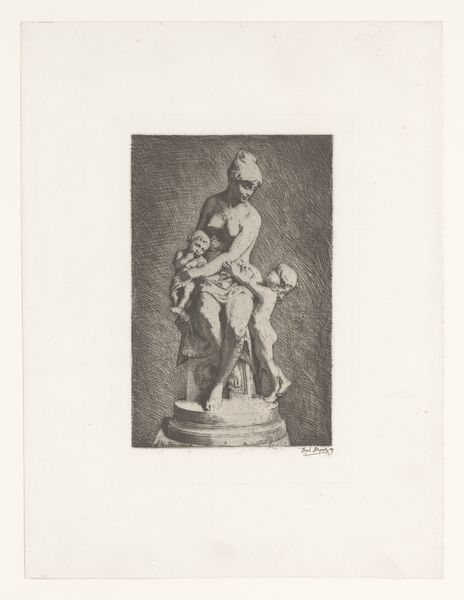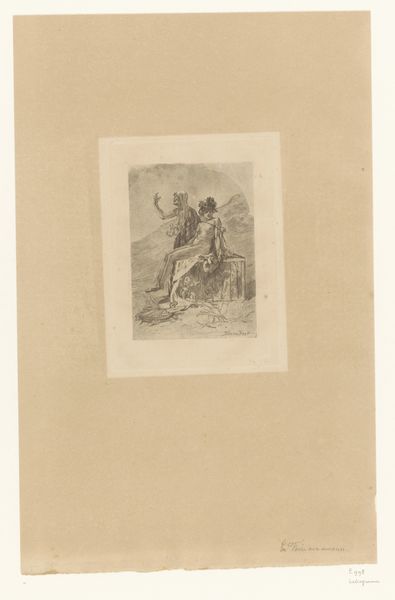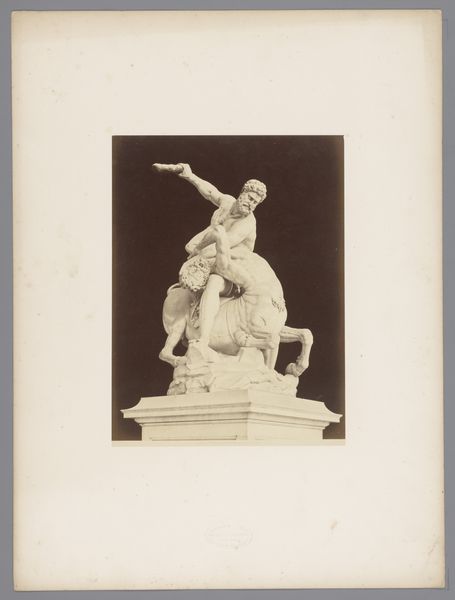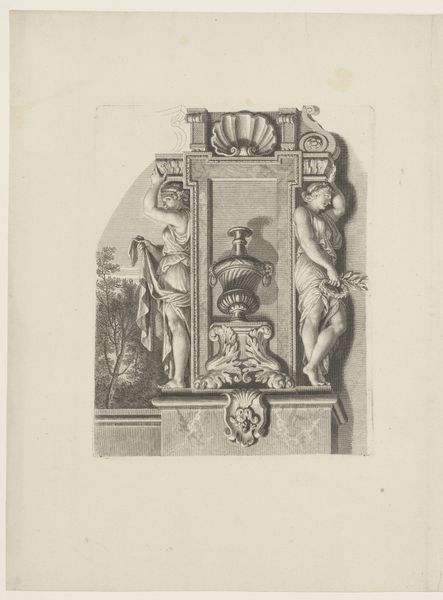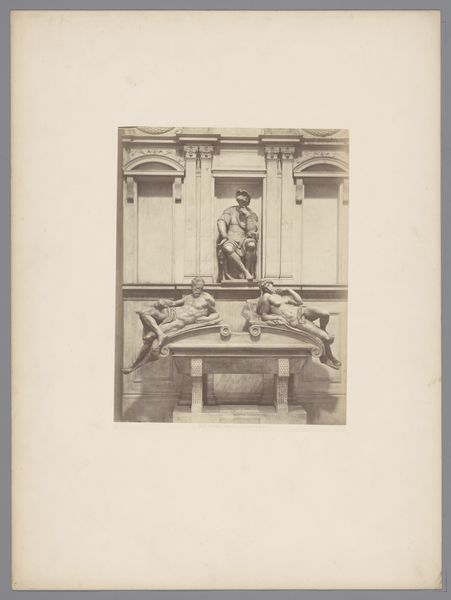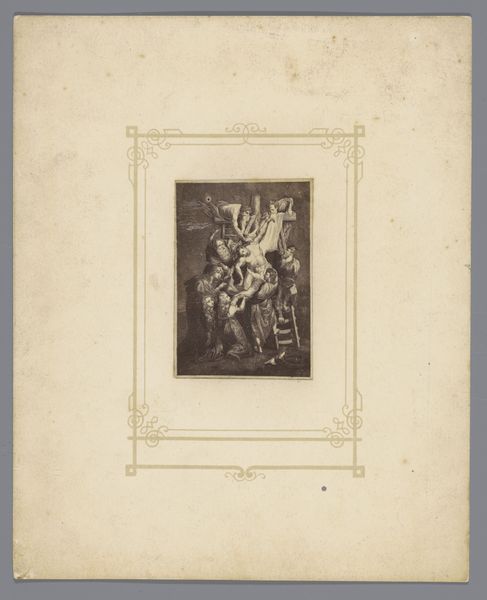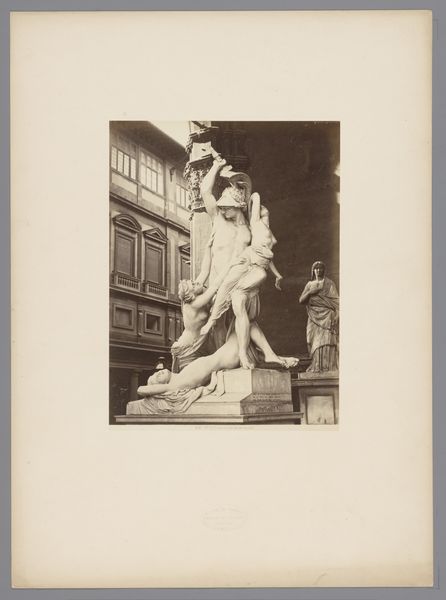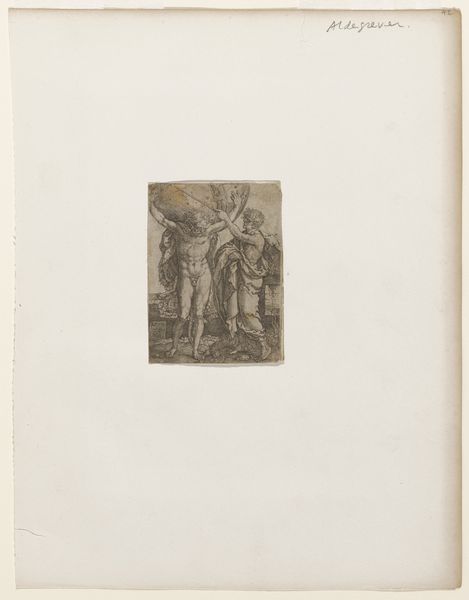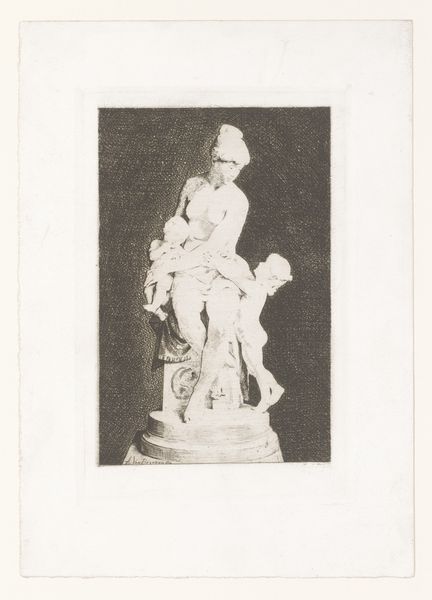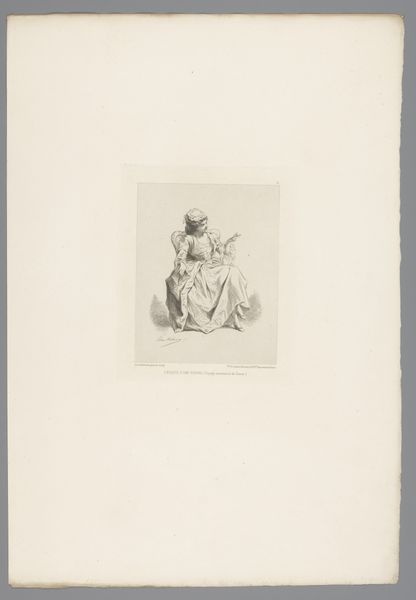
drawing, print, etching
#
drawing
#
narrative-art
# print
#
etching
#
figuration
#
female-nude
#
symbolism
#
male-nude
#
erotic-art
Dimensions: plate: 10 7/8 x 8 in. (27.6 x 20.3 cm) sheet: 17 15/16 x 13 9/16 in. (45.5 x 34.4 cm)
Copyright: Public Domain
Curator: This is Félicien Rops' "The Sacrifice, from 'The Satanic Ones'," a print made using etching and drawing techniques, created sometime between 1862 and 1902. Editor: It definitely has a dark and unsettling mood, especially with the depiction of the female nude on what appears to be an altar. How would you interpret this work, especially considering Rops’ broader artistic focus? Curator: Rops was deeply critical of bourgeois society and often explored themes of transgression, sexuality, and the demonic. This piece isn't just about a surface-level shock value; it critiques the objectification of women and the societal structures that enable it. Note the way the female figure is passively displayed, literally a sacrifice. Who benefits from this sacrifice, and what ideologies are being upheld? Editor: So you’re saying it’s not just erotic or titillating but a commentary on power dynamics? Curator: Precisely. The demonic figure above her can be seen as a manifestation of patriarchal control, perhaps a stand-in for societal institutions that dehumanize women. The title "The Satanic Ones" adds another layer, suggesting a world where conventional morality is inverted and corrupted. How do you think Rops employs symbolism to enhance this message? Editor: The serpent intertwining the two figures could represent temptation or perhaps the link between the earthly and the unholy. Also, the altar-like structure underneath reinforces that idea of a ritualistic offering. Curator: Exactly! And consider the historical context – this piece emerged during a time of immense social upheaval, challenging Victorian ideals of femininity and morality. Rops compels us to confront uncomfortable truths about the human condition and the systems we create. What do you make of the gazes, or lack thereof, between the characters represented here? Editor: That's really impactful, I initially saw it as disturbing, but understanding the social critique transforms my view completely. I'm definitely going to research more about the role of women in Symbolist art now. Curator: It’s a complex piece and there are no easy answers, but this piece certainly forces a viewer to confront uncomfortable questions about power and representation.
Comments
No comments
Be the first to comment and join the conversation on the ultimate creative platform.
